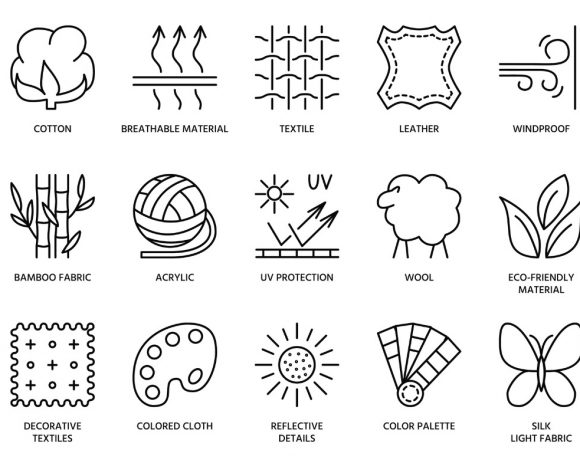- Taiwanese textile companies have embarked on the circular fashion journey by eliminating hazardous substances and microplastics from their textiles and considering textiles’ end of life. This step ensures that the clothes will have no negative impact during their production and use and later either enables their large-scale recycling or reduces the impact of their disposal.
- Apart from giving new life to recycled plastics, the Taiwanese textile industry is also actively engaged in searching for textile solutions that include the use of “waste” from renewable resources, such as coffee grounds, fish scales, and pineapple leaves.
Taiwanese companies are embracing “circular fashion” through technology and innovation. Based on circular economy principles, circular fashion has been hailed as the solution to fashion’s systemic problem. According to a 2017 report by the Ellen MacArthur Foundation, the fashion industry is responsible for 10% of humanity’s carbon emissions. It is the world’s second-largest water supply consumer and a significant water polluter. Moreover, 85% of the over one billion annually produced clothes are later discarded, with less than one per cent of the garments collected for recycling made into new clothes. Instead, they end up in the incinerator or a landfill, where they can take hundreds of years to decompose.
In contrast to today’s linear system, a circular fashion system is regenerative by design and does not rely on consuming finite resources for growth. To achieve circularity, the Ellen MacArthur Foundation proposes four steps: phase out substances of concern and microfibre release; radically improve recycling; increase clothing utilisation; make effective use of resources and move to renewable inputs. Through innovative technologies in line with these steps, many Taiwanese companies are working towards making the fashion industry more circular and sustainable locally and globally.
Sustainable textile innovations
Taiwanese textile companies have embarked on the circular fashion journey by eliminating hazardous substances and microplastics from their textiles and considering textiles’ end of life. This step ensures that the clothes will have no negative impact during their production and use and later either enables their large-scale recycling or reduces the impact of their disposal.
Taiwan is uniquely qualified for this endeavour and is the world’s seventh top exporter of textile products. In 2021, the island’s textile export value was US$9.03 billion. In its long history of textile manufacturing, the industry has changed from being a mass producer of cheap fabrics to a textile innovator. The industry focuses on producing high-quality smart, functional, and sustainable fabrics and has stayed on the list of top players worldwide.
The Taiwanese textile industry is continuously perfecting existing production processes and technology, and thanks to the strategic investment in R&D, there is no shortage of sustainable textile innovations. Taiwan has long been a leader in developing yarns from recycled PET bottles, even finding ways to make them break down within five years.
Apart from giving new life to recycled plastics, the Taiwanese textile industry is also actively engaged in searching for textile solutions that include the use of “waste” from renewable resources, such as coffee grounds, fish scales, and pineapple leaves. While for the latter, the idea does not originate from Taiwan, the island’s large-scale fruit production and its 280000 tons of leaves burned each year have made it worthwhile for local manufacturers to develop it. Successful products include Foremost Group’s NUPELLE, a leather made from pineapple, and Supertex’s range of fabrics made from a recycled polymer and pineapple blend.
For other waste products, Taiwanese textile companies have played a pioneering role. In 2009, the Taiwanese company SINGTEX launched the brand S.Café. The brand created a technology that uses leftover coffee grounds to create a quick-drying yarn that protects from UV rays and absorbs body odours.
Another innovation is Camangi Corporation’s Umorfil, launched in 2012. Umorfil technology integrates collagen peptide amino acid derived from aquaculture fish scales – waste from fish products – with natural or synthetic fibres. The textiles are skin friendly, naturally deodorising and cooling, anti-UV, and moisturising.
S.Café and Umorfil have since applied their technologies to create a wide range of fabrics for diverse purposes. Additionally, various textile companies have used a third waste product from food – oyster shells. The finely ground shells are mixed with recycled plastic bottles to create a fabric that protects the skin from UV rays, is anti-odour, and provides insulation from the cold. It can also be stylish. Clothes made from fish scale and oyster shell fabrics featured prominently during Taipei Fashion Week 2022, and Vogue magazine describing them as “highly wearable” shows their potential to become mainstream eventually.
New business models
The average number of times a piece of clothing is worn before being discarded has decreased by 36% since the early 2000s. Consequently, the most effective way to reduce waste and pollution in the textiles system is to increase clothing utilisation. Some Taiwanese companies are exploring new business opportunities based on garment reutilisation. To that end, they are repurposing technology already familiar to their digitally savvy customers.
A growing number of companies, such as AMAZE, use e-commerce technology and infrastructure to offer clothing for rent. Customers can choose from a wide variety of clothes for formal and informal occasions, and after wearing the items for some time, they can return them to be washed and rented out again. Although clothing rental is only in its infancy, it has the potential to become an attractive and more sustainable alternative for customers who enjoy frequent outfit changes.
Other companies are taking advantage of the popularity of vintage and secondhand clothes among the younger generations. Taiwan-based startup PopChill gives a fresh spin to the traditional secondhand clothing store. On its fashion e-commerce marketplace app (which resembles Instagram), sellers can create content to promote and sell unused garments. Other companies are looking to increase the utilisation of clothes by changing how they are designed, stocked, and purchased.
Digitalisation for sustainable fashion
Taiwan-founded company TG3D Studio creates affordable scanning technology that can improve sustainability in fashion. In the seven years since its founding, the company has worked with many overseas fashion brands, including big name brands such as H&M, New Balance, and C&A. TG3D Studio’s body scanning apparatus uses infrared light to measure millions of 3D points on the body surface and – within seconds – generates a 99.99% accurate 3D avatar of the user. For customers without access to this hardware, the company has created a body scanning app that works with the smartphone’s camera to create an avatar that is 99.7% accurate. How can this technology benefit the environment? According to TG3D, it all comes down to the fit. If a piece of clothing fits well, it is more likely to be bought and worn repeatedly.
The body scanning technology can help in several ways. First, it can directly address the root of the problem with fit and help fashion brands make better-tailored garments for their target customers. Fashion designers and manufacturers still rely on outdated standard measurement charts to design and produce clothing, which only fits a small part of society well. Fashion brands can thus use the 3D body scanner and the anonymously collected data from the scans to design better-fitting clothes for the modern customer. Second, fashion brands can also use the data to predict the size distribution in different geographic markets. This enables them to order stock accordingly and prevent costly and wasteful dead stock.
With sales reaching trillions of U.S. dollars worldwide, fashion e-commerce has penetrated our daily lives. However, a considerable amount of online apparel is eventually returned. The main reason cited is the poor fit, unsurprising since clothing sizes between different brands can vary by up to six inches. Reports show that a significant number of returns end up in a landfill. This is where scanning technology and digitisation can increase customer satisfaction with the fit and reduce return rates when shopping online.
Online retailers are slowly introducing ways to give better size recommendations, and the body scanning app can certainly contribute. Nonetheless, knowing what a piece of clothing looks like on the body before buying it would be even better. TG3D Studio has created the technology to produce accurate 3D models of garments that can then, through a process called “Virtual Try On”, be put on the customers’ avatars. The company’s CMO & Co-Founder, Rick Yu, has said that they are ready to roll out the technology– the only thing missing is the right partner in retail. He is confident that customers will be able to use Virtual Try On as early as the beginning of next year. Although it may take some time for the technology to go mainstream, its impact on reducing returns is predicted to be significant.
Lastly, digitising the fashion industry can also increase the effectiveness and efficiency of pre-production processes and minimise waste. Scanners and software are making the creation of multiple physical samples superfluous. As Senior Marketing Manager Vivi Su of TG3D Studio explained, nowadays, and especially as an aftermath of the COVID-19 pandemic, many big fashion brands do not want to wait for fabric samples to be produced and sent. Instead, they require their suppliers to hand them in digitally. This is possible because textile producers can use fabric scanners and software to scan their sample fabrics, digitally alter their colours, and send digital samples worldwide within minutes. Similarly, body scanners and software enable designers to create and alter samples as often as they want digitally, all with the click of a mouse. This way, the digitalisation of the fashion industry can reduce waste and be more cost and time effective.
Outlook
Taiwanese technology and innovations have a lot of potentials to contribute to a circular, sustainable global fashion industry. With surveys showing domestic and global costumers becoming increasingly conscious of the impact of their fashion choices and sustainability being a key criterion for purchasing, the industry will have to adapt accordingly. However, as many experts have warned, textile innovations and greening the mass production process are not quick fixes for the problem. The uncomfortable truth remains: the key to circular fashion is not to buy more sustainably but to buy less. Without a drastic reduction in production and consumption, circularity in fashion is impossible. Whether or not customers and the fashion industry are ready for that remains to be seen.




NO COMMENT